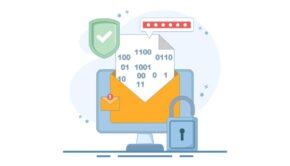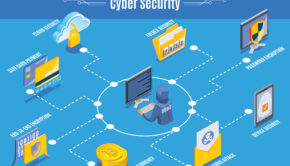The Future of IT Management: Adapting to Rapid Technological Changes
The digital environment was once seen as a look into the future; now, it is our present and is evolving at a faster rate every year. With new business technologies rapidly emerging, it can feel difficult to keep up. This article will walk you through the best strategies to ensure you keep your business up to date and aren’t left behind by the tech revolution.
Evolving IT Landscape
To say technology is changing rapidly would be a massive understatement. It’s not just evolving—it’s exploding with innovation. Data is the fuel, and it’s overflowing. Consider this: a staggering “90% of the world’s data was generated between 2019 and the present”. Let that sink in for a moment. This exponential data surge is the driving force behind the new technology in business, pushing us toward a future brimming with opportunities.
The latest forecast from Gartner, Inc. predicts that global IT expenditure will reach $5.06 trillion in 2024. This represents a sizable uptick of 8% over 2023 and a noted acceleration from the prior quarter, which predicted growth would slow to 6.8% this year. The latest forecast puts worldwide IT spending on a trajectory to exceed $8 trillion well before the end of the 2020s. The United States, a major player in the tech arena, is experiencing a similar trajectory. “The U.S. tech industry is expected to have a CAGR of 5% through 2024.” This steady growth signifies a long-term commitment to research, development, and implementation of innovative technology in business, solidifying its place as a cornerstone of the global economy.
Role of Experienced IT Leaders
Adopting new technology for your business is no longer optional—it’s essential for survival. As companies strive to stay ahead of the curve, implementing it effectively is the key to unlocking its full potential. This is where experienced IT leaders come in. They play a pivotal role in navigating the complexities of technology implementation plans, ensuring that new systems and processes integrate seamlessly with existing infrastructure.
Their expertise is invaluable in guiding organizations through every step of the adaptation of technology. Developing technology solutions tailored to specific business needs requires a deep understanding of both the technology itself and the organization’s goals.
Additionally, seasoned IT leaders possess the foresight to anticipate potential challenges and mitigate risks associated with technology adoption. Their ability to build consensus among stakeholders, manage expectations, and communicate effectively is paramount in fostering a smooth transition and maximizing the return on technology investments. Genpact predicts that by 2025, firms that have adopted AI will be ten times more efficient and have twice the market share than those that haven’t. This highlights the competitive edge that experienced IT leadership brings to the table in a world increasingly driven by technology.
Benefits of Hiring a Fractional CIO
Bringing in a seasoned technology leader might seem like an expense only large corporations can afford. However, with the emergence of fractional CIOs like Class IV, small and medium-sized businesses (SMBs) now have access to the same level of expertise without the hefty price tag of a full-time executive. This approach provides a flexible, cost-effective solution to bridge the strategic and technological gap.
But what exactly are the tangible benefits of hiring a fractional CIO? Let’s explore a few key advantages:
- Cost Savings: Hiring a full-time CIO can strain an SMB’s budget. A fractional CIO, on the other hand, provides high-level expertise at a fraction of the cost, allowing you to allocate your resources more efficiently.
- Access to Expertise: You gain access to a seasoned professional with a wealth of experience, equipped to provide strategic guidance and navigate complex technological challenges.
- Improved Technology Alignment: By aligning your technology strategy with your overall business goals, a fractional CIO helps improve efficiency, productivity, and, ultimately, your bottom line.
- Enhanced Security Posture: Cybersecurity is essential in a world where hackers affect businesses every day. A fractional CIO can assess your current security measures and implement robust protocols to mitigate risks and safeguard your valuable data.
- Scalability and Flexibility: As your business grows and evolves, so do your technology needs. A fractional CIO offers the flexibility to scale their services up or down, ensuring you have the right level of support when you need it most.
Cybersecurity Measures
Cybersecurity is a top priority for businesses today. In fact, according to CompTIA, a staggering 84% of companies say that cybersecurity and resilience are a top priority for 2022. But what does this mean in practice?
This means that companies are increasingly investing in cybersecurity measures to protect their data and systems from attacks. Businesses can take many different types of cybersecurity measures. However, some of the most common include:
- Implementing firewalls: I see firewalls as the first line of defense when it comes to cybersecurity. They act as a barrier between a computer network and the outside world, blocking any unauthorized access.
- Using antivirus software: I always recommend installing a reputable antivirus software. It helps protect your systems from malware, such as viruses, worms, and Trojan horses.
- Updating software regularly: Software updates often include patches for security vulnerabilities. Regularly updating your software helps reduce the risk of hackers exploiting your systems.
- Educating employees about cybersecurity: I cannot stress enough how important this point is! Employees should be aware of the importance of strong passwords, phishing scams, and other cybersecurity threats.
- Using strong passwords: Let’s face it, strong passwords are essential for protecting your accounts. I advise people to use a combination of upper and lowercase letters, numbers, and symbols and create a password that is at least 12 characters long. Alternatively, most password managers will generate high-security passwords for you.
By taking these steps, businesses can significantly improve their cybersecurity posture and reduce the risk of being attacked.
Strategic IT Investment
Budget Allocation
Businesses need to allocate their IT budgets effectively if they want to strike the right balance between maintaining existing systems and innovating toward new ones. Companies have to start somewhere, and it makes sense to begin with a fresh assessment of the current IT infrastructure. What needs fixing now? What systems need an upgrade? How can cybersecurity be fortified? What outputs should we expect from our data backup solutions, and are we getting them? Once those foundational needs are addressed, we can turn our attention to the kinds of projects that might make our IT operation an order of magnitude more effective.
Return on Investment (ROI)
Assessing the ROI of IT investments requires more than just looking at the straightforward benefits. It’s necessary as well to think about what these benefits really mean in the context of IT budgets and business operations. Some of today’s key metrics—cost reduction, revenue growth, operational efficiency, and customer satisfaction—all relate to the benefits IT can provide. IT can increase these benefits, or it can help to keep these benefits stable when otherwise they might be decreasing. For example, businesses can use IT to automate tasks that humans currently do. When an alternative is to pay someone to do a task, doing that task with IT instead can save a lot of money.
Change Management
Managing Technological Change
A clear and comprehensive approach is necessary for the successful management of technological change within any organization. This involves, first and foremost, a communication plan that imparts to all stakeholders the benefits and implications of the new technology. When employees understand the advantages and the reasons for their adoption, they are less likely to resist the change. Training programs with the hands-on practice that new technology requires are crucial in achieving any successful transition. Furthermore, the use of the technology and its new procedures must become second nature to employees if the new system is to be fully implemented. Staggered progress from manual to automated processes will help alleviate anxiety for all involved.
Cultural Shift
A significant shift in culture often accompanies the adoption of new technologies. Organizational leadership is pivotal in creating a culture that fosters innovation and adaptability. To this end, leaders must do two things. First, they must cultivate in themselves and their organizations a mindset that is open to the possibility of innovation. They must see technological change as something that can and should benefit the organization and its people. Second, after a business has established this mindset, leaders must then encourage the organization’s members to experiment—to try new tools and processes in ways that might lead, if not to some immediate IT win, then at least to the discovery of what won’t work. And that culture of experimentation is contagious; it helps to produce a resilient organization capable of gritting its teeth through the hard times of not-quite-working new technologies on the way to the IT successes that hopefully await just around the corner.
Conclusion
Adapting to rapid technological changes is essential for the future of IT management. Experienced IT leaders, including fractional CIOs, play a crucial role in guiding businesses through these transitions, ensuring that new systems integrate seamlessly with existing infrastructures. Building a resilient IT infrastructure, supported by robust cybersecurity measures, is vital for business continuity and protecting critical IT assets. Embracing these strategies will enable businesses to thrive in the evolving digital landscape.
Cover Image: Freepik
















